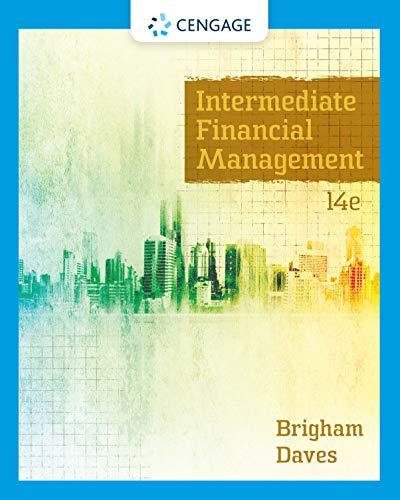Question
(5 pts) Your firm has a 50/50 debt/equity capital structure.It can borrow money at 7% and calculates its required return on equity as 16%.Your company
(5 pts) Your firm has a 50/50 debt/equity capital structure.It can borrow money at 7% and calculates its required return on equity as 16%.Your company pays corporate taxes at a rate of 21% and (because of domestic capital investment incentives that are part of the of the 2017 tax law) can depreciate the entire investment in year one.Assume your company has extensive other operations which are profitable: be thoughtful when calculating tax.
The company is considering making an acquisition of a smaller firm.This acquisition is expected to produce a positive annual cash flow before tax and depreciation (EBITDA) of $300,000 initially.The negotiated acquisition price is to pay 5x their EBITDA, to purchase the equity of the firm.That would be your only CF zero item.
You expect to grow the EBITDA by 5% per year.In order to do so, you will invest an equivalent of 10% of EBITDA in working capital.You ramp that up in full during year one, and then add additional working capital, as needed, as EBITDA grows.Further, you are expecting to spend $5,000 per year in Maintenance CapEx.Maintenance capital expenditures keep the plant and property fresh and up to date.It's an expense, with no depreciation or tax impact.
You are not assigning any purchase interest expense to this acquisition, as you are going to discount all the projected cashflows using your calculated WACC.
You want to know when this acquisition becomes profitable.You think it might take six or seven years.Calculate the project's NPV and IRR after year six and after year seven.As the project will be ongoing, you will not recapture working capital.
Fill in the cells that contain these responses with yellow paint:
- Total cash flow year one (1 pt),
- year 6 NPV (1pt)
- year 6 IRR (1pt)
- year 7 NPV (1pt)
- year 7 IRR (1pt).These will be graded correct or incorrect.
Submit this as a spreadsheet that shows all work.
Step by Step Solution
There are 3 Steps involved in it
Step: 1

Get Instant Access to Expert-Tailored Solutions
See step-by-step solutions with expert insights and AI powered tools for academic success
Step: 2

Step: 3

Ace Your Homework with AI
Get the answers you need in no time with our AI-driven, step-by-step assistance
Get Started


